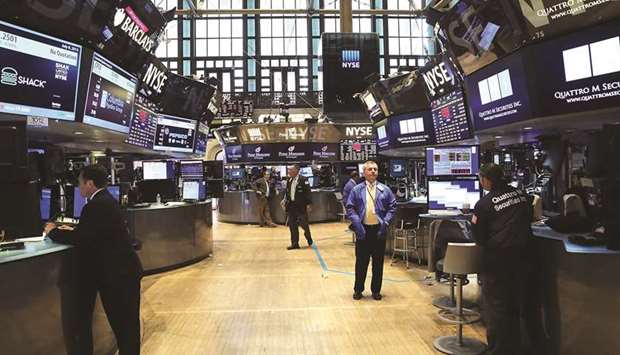The relentless rise in global stocks should extend in the short-term as investors pump record amounts of cash into equities after a “super-frothy” start to 2018, strategists at Bank of America Merrill Lynch said yesterday.
Investors ploughed $23.9bn into stocks this week, bringing cumulative four-week inflows to their strongest ever level, BAML strategists said, citing EPFR data.
The record inflow to stocks reflected investors’ overwhelmingly optimistic view on equities as global indices continued to crank out new records, driving them to add risk and wary of being left out of the final leg of the bull run.
“Happy new ‘Fear of Missing Out’”, BAML strategists quipped.
This week’s equity inflows were the seventh largest on record, with $20.4bn going into ETFs and $3.5bn into mutual funds.
Actively managed funds enjoyed their best cumulative four-week inflows in four years, a sign the active method was beginning to claw back some ground from passive funds.
Europe’s equities continued their recovery from outflows suffered in December, drawing in $2.2bn of investors’ cash, while the US remained the clear leader with $6.4bn flowing in. Cyclical sectors continued to rule the roost with financials, tech and energy stocks drawing the greatest inflows.
Amid the new year exuberance, there were hints the market couldn’t keep going at its blistering pace.
On the S&P 500’s current momentum – 133% annualised return – it would reach 6220 points by the end of the year, BAML strategists noted.
It closed at 2798 on Thursday.
Investors still fretted about bond yields and inflation.
The most frequently asked question by institutions was “what level of bond yields will cause an equity correction”, while private clients were most concerned about how to position for inflation.
While bonds also drew strong inflows of $5.1bn this week, TIPS (inflation-protected US Treasury bonds) funds drew record inflows of $1.5bn in a sign investors were growing more cautious about inflationary pressures.
Strong flows into financials stocks and big redemptions from real estate investment trusts were also incipient signs of inflation positioning.
BAML strategists pointed to slowing flows and hesitant price action in credit markets as signs of strain.”Credit is ‘glue’ keeping cross-asset bull market together,” they wrote, labelling the market a “clear bear catalyst”.
Issues including a potential US government shutdown, NAFTA negotiations, and oil prices were noise to worry about, strategists said, but they wouldn’t affect bullish positioning unless they dented earnings or translated into higher rates.
Having pushed back their prediction for a big market correction for month after month last year, BAML’s strategists didn’t put a new date on the long-awaited sell-off.
Feedback from clients pointed to a correction occurring only when real GDP forecasts, wage inflation and 10-year US Treasury yields all rise above 3% and the S&P 500 reaches 3,000 points, they said.
In the meantime “frothy price action could continue,” strategists concluded, adding that their bull and bear indicator of market sentiment had risen to 7.4, near a sell signal.
Traders stand on a trading floor at the New York Stock Exchange (file). The relentless rise in global stocks should extend in the short-term as investors pump record amounts of cash into equities after a “super-frothy” start to 2018, strategists at Bank of America Merrill Lynch said yesterday.

LARGEST
